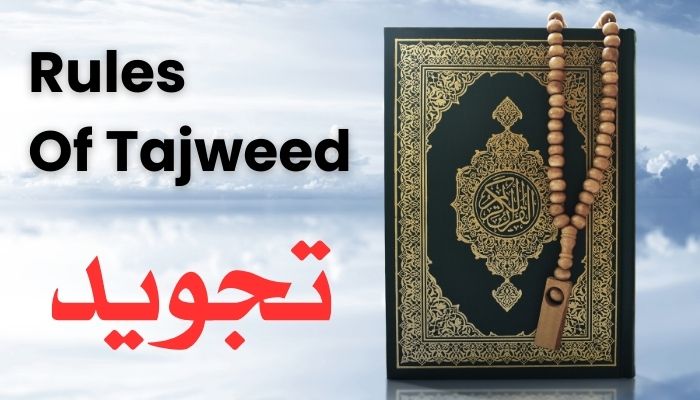Tajweed is the set of rules and principles that govern the proper pronunciation and recitation of the Quran in Arabic. It is essential for Muslims who want to recite the Quran with precision, beauty, and respect. Here are some key rules and principles of Tajweed.
Makharij al-Huruf (Articulation Points of Letters):
Tajweed begins with learning the correct pronunciation of Arabic letters. This includes knowing where in the mouth or throat each letter originates and how it should be pronounced.
Izhar (Clear Pronunciation):
Izhar is the clear and distinct pronunciation of Arabic letters. It means that each letter should be pronounced distinctly without any blending or merging with adjacent letters.
Iqlab (Conversion of Nun Sakinah/Tanween to ‘Ng’):
Iqlab is the rule that applies when a Nun Sakinah or Tanween (a double or single vowel sound resembling “n”) is followed by a Ba (ب). In this case, the Nun Sakinah or Tanween is pronounced as “ng.”
Ikhfa (Concealing Pronunciation):
Ikhfa is the practice of slightly concealing the pronunciation of the letter Noon (ن) or Meem (م) when they appear with certain other letters. It is not pronounced fully but is somewhat muted.
Idgham (Merging Pronunciation):
Idgham is the rule that involves merging the sound of a Noon Sakinah or Tanween with the sound of the following letter when specific letters appear after them.
Qalqalah (Vibrating Pronunciation):
Qalqalah is a vibration of certain letters (Qaf, Ta, Ba, Jeem, and Daal) when they are pronounced with sukoon (no vowel markings) and occur within a word. This vibration adds emphasis to the letter’s pronunciation.
Ghunnah (Nasal Sound):
Ghunnah refers to the nasal sound produced when pronouncing Meem (م) and Noon (ن) with a shaddah (double consonant) in specific situations. It involves making a humming or nasal sound while pronouncing these letters.
Rules of Lengthening (Madd):
Madd represents the prolongation of certain vowels and letters in specific words. There are two types of Madd: Madd Asli (original lengthening) and Madd Far’i (secondary lengthening).
Rules of Stopping (Waqf and Ibtida’):
Tajweed also includes rules for pausing and stopping when reciting the Quran. Knowing where to pause and start is essential for proper understanding and recitation.
Continuous Practice and Recitation:
Learning Tajweed is an ongoing process that requires continuous practice and recitation of the Quran under the guidance of a qualified teacher. Regular practice helps to internalize the rules and improve pronunciation.
It’s important to note that Tajweed is traditionally taught by a knowledgeable teacher who can provide direct guidance and correction. Learning Tajweed is not only about following rules but also about developing a deep and respectful connection with the Quran, ensuring that it is recited as it was revealed by Allah to the Prophet Muhammad (peace be upon him).

